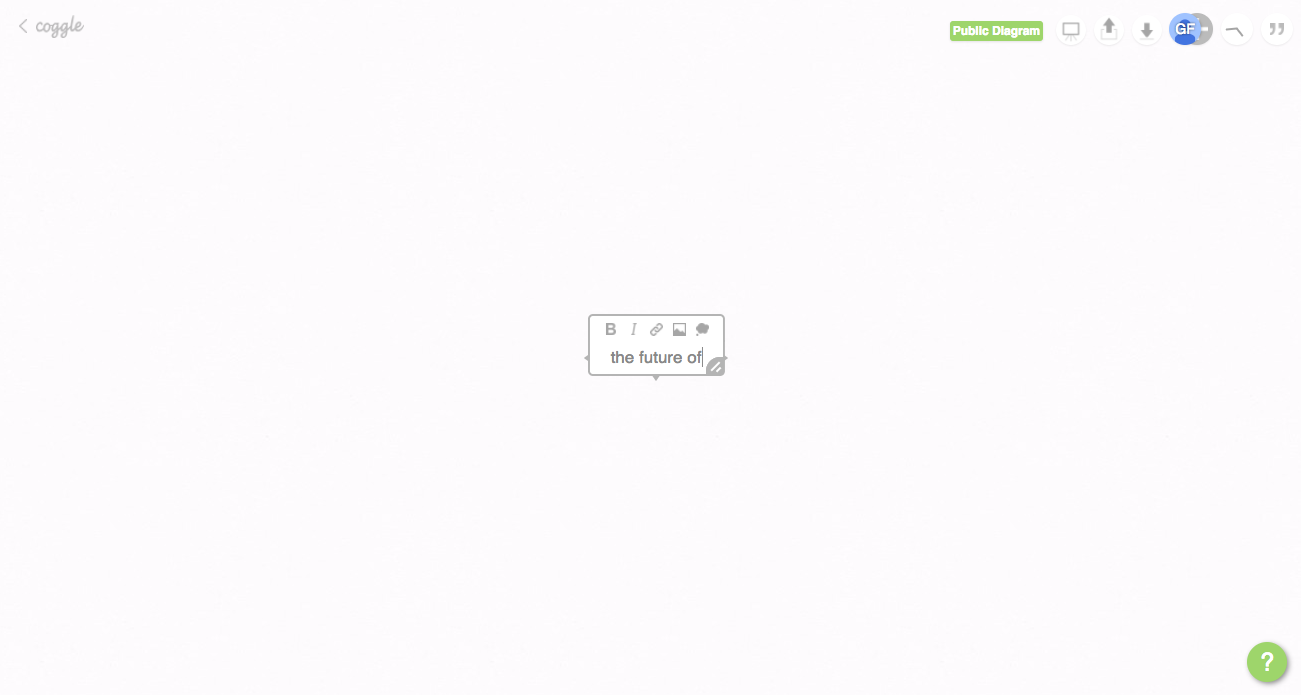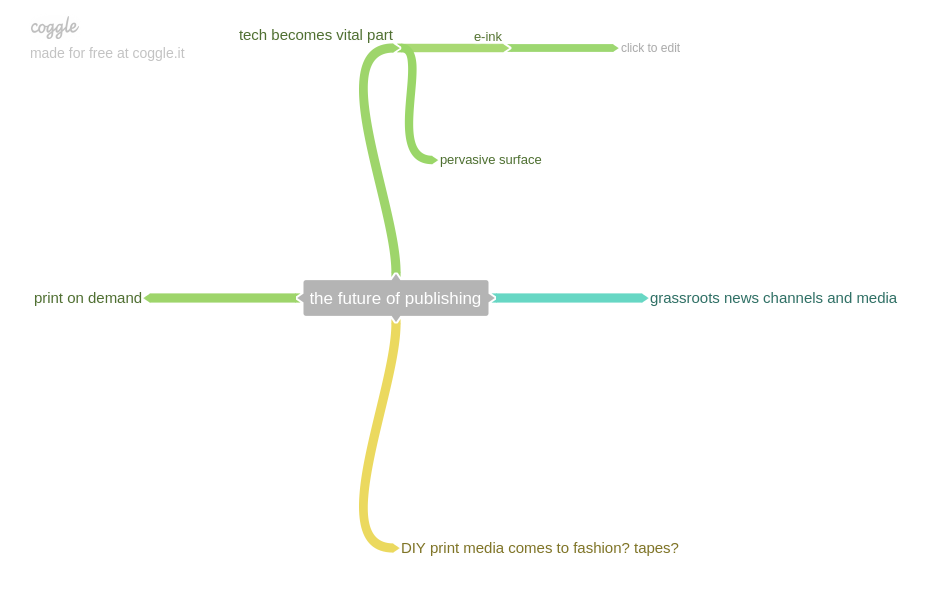
The aim of this post is to introduce our readers to the creativity technique called Brainstorming. This was invented by an ad person called Alex Faickney Osborn, when he got frustrated because his subordinates couldn’t find a new idea. Its general principles are 1) go for quantity and 2) defer judgement for later. Wild ideas are welcome, as is a combination of them, hoping for a new and better offspring.
We will be addressing techniques meant only for individuals. We aim at providing you with a certain frame that you can use in your own brainstorming sessions, by adding to it, or tweaking it in your own way, until you get the best results from it.
The Mindset
Regardless of how wild or numerous the fruits of your brainstorming sessions are, the most fundamental rule of any type of brainstorming is judgement deferment. If you do not practice deferment of judgement, then you will run out of ideas and if it gets worse, you will eventually run out of willpower and out of zest for life. The essence of judgement is to break down, and by exercising it without control, it can seriously deplete your life’s energy.
Pausing and/or deferring judgement makes space. Just as you clean your desk before you start working, or the kitchen sink before you start cooking, the same goes for deferring judgement before you begin brainstorming. This is essential, in order for the creative processes to start, warm up and ideally ignite sparks. What you will need to do is to capture all that stray, fragile flame. Be aware that if you judge it, it will die and be blown out.
The Process
You begin by setting aside a specific amount of time in a day, in order to brainstorm. During that time, cellphones will be switched off, doors will be locked, computers will be turned off, electrical appliances that beep will be unplugged, and so on.
To mark the beginning and the end of a session, use a Pomodoro timer (like the awesome Clockwork Tomato for Android).
Open the brainstorming journal (you should have one or several), note the date and the time, and the purpose of this brainstorming session (to achieve what? towards what end? etc) and then close it.
There are a couple of ways to start and one is by doodling. Have a blank pad of paper in front of you and your favourite writing tool and begin by mindlessly drawing patterns like you did when you were younger. In the beginning, there will be plenty of “mm, what should I draw now?” moments that block you from doing it, but ignore them and start drawing whatever comes to mind. If you want some inspiration, check the videos of Vihart on Youtube!
Besides doodling, there are other similar methods:
- LEGOs. Just shuffle them around, order them by colour and shape, put them further apart, bring them near, juxtapose them.
- Sea shells, pebbles, found objects and the lot. Create a glyph with a meaning.
- Notes Cubes. Write concepts on them and shuffle them around and pair them to come up with interesting new ones!
It is by bringing things together, contrasting them, ordering them, and so on, that we start to initiate the same processes inside our brain. What we want to stir up is that awesome cauldron of fire called imagination!
Try our Award-Winning WordPress Hosting today!

The idea of combinatorial creativity is that by juxtapositioning pre-existing ideas or objects in a novel way, we understand a great deal about human creativity, and what interests us most, “to design programs that can enhance human creativity without necessarily being creative themselves.”
The Flow
At some point in the process, you will enter what Mihály Csíkszentmihályi calls a “Flow” state. According to Wikipedia, It is a “mental state of operation in which a person performing an activity is fully immersed in a feeling of energized focus, full involvement, and enjoyment in the process of the activity. In essence, flow is characterized by complete absorption in what one does.”
It takes around 20-30 minutes of perseverance to “wade” through the initial “muck” of brain-fog, jittery attention and head scratching. When you focus on something and start working, keep your attention for 30 minutes on the task. If you find yourself wanting to grab a bite or to check out Twitter do the following:
- Remain where you are with what you are looking at, in front of you (your project). Do not switch tab or get up from your chair or direct your attention elsewhere.
- Rest if you wish and acknowledge the fact that you cannot concentrate.
- When you’ve rested enough, give it another go.
As long as you rest gently and turn your mind again to the task at hand, you will soon find that it gets easier and easier, until you eventually enter the “Zone”. Careful, though, because if someone interrupts you, you might need to do it all over again!
MindMapping Your WordPress Project
Mindmaps are diagrams that represent and visualise hierarchical information. You start with a basic concept, drawn in the center of your page (electronic or otherwise).
Use images, symbols, codes, icons, text throughout. Similar ideas, related to the center concept on the page, are drawn like bubbles and connected with lines. You can use color for grouping or encoding. Other ideas, steps or concepts arise from the previous ones. These are linked under the bubbles of their parent-concepts and so on. The result is a biological, almost dendritic drawing.
Let’s say you want to use this tool in order to find inspiration and plan your next WordPress blog post. Let’s login to Coggle.it, a collaborative mind-mapping tool.
- Click the Create New Diagram button.
- Click to edit title. Write a one word topic of your next blog post. It should be your central keyword. In this example we used “the future of publishing”.

3. By using free-association, we write the next thoughts we run into. These are depicted as branches. After adding some to it, we might need to do some trimming or re-arranging of the children nodes.
4. On some leaves we continue working using free-association. Publishing tech reminds us of “e-ink” and “pervasive surface”.
5. The leaves that are parents to your central idea could be the sections of your post, with their children as separate paragraphs. Or you might find that writing a whole article for “The Role of DIY Zines In The Future Of Publishing” might be more appealing.

It’s Going to Get a Lot More Weird
In this article we used our brain, some silence, a Pomodoro timer, pen and paper, junk, and a collaborating mindmap tool to start tuning ourselves into a more creative way of life. In future posts we will touch more deeply into matters such as:
- what psychologists call Priming.
- how movement can free-up your conditioned thinking.
- Nature, solitude and silence.
- More metaphors and tools to use.
In order to be a successful WordPress professional you need to be a full human being first. Finding yourself more and more in a state of “Flow” during the day, you get more in touch with your mind and body. And when that happens, your life and the lives of your loved ones will be richer as a result.
Start Your 14 Day Free Trial
Try our award winning WordPress Hosting!





















